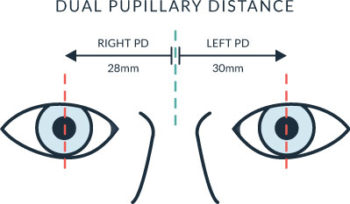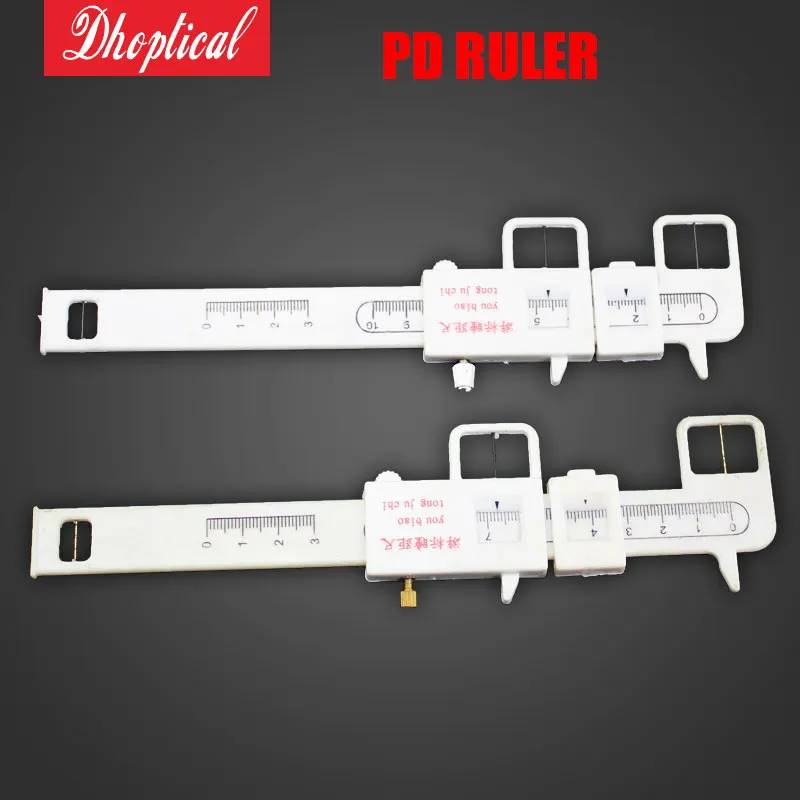

Let’s say you have your eyeglass prescription and want to buy a stylish pair of wire frame glasses online. Your optometrist or dispensing optician typically measures PD as part of your eye exam using a pupillary distance ruler or a corneal reflex pupillometer, calibrated specifically to each eye. PD is especially critical when fitting glasses with progressive lenses, which requires precise lens-to-pupil alignment to ensure comfortable vision at all distances.

Mono PD is believed to be the most accurate since many people may find their nose-to-pupil measurement is not equidistant on both sides. Mono PD is the measurement from your nose bridge to each eye. There are two primary methods for PD measurement: Binocular PD and mono PD.īinocular PD is the measurement from pupil to pupil between each eye. The average pupillary distance for an adult is about 63 mm, but this is not a number you’ll want to guesstimate.Īfter all, measurement can vary widely - between 51 mm and 74.5 mm for women and 53 mm and 77 mm for men, according to military-recorded measurements. Having your PD handy is just as essential as your prescription when it comes to ordering a new pair of eyeglasses or prescription sunglasses online. Your pupillary distance (PD) - the distance between your pupils - determines comfort and how well your glasses fit. (you'll probably get an explanation of monocular and binocular PD values)īut, wouldn't it have to say which number was right, and which number was left? Yeah, I don't see it either.If you’ve ever tried on a pair of glasses and experienced (ouch!) instant eye strain, the reason could lie right between your eyes, meaning your pupillary distance could have been measured incorrectly. (point at the number) I looked it up on the internet, and PD tells how far apart my eyes are.right? So, is this supposed to mean that my eyes are only 30mm apart? That's only about this big. My eye doctor just gave me this prescription, and this part jumped out at me.just doesn't look right.

(Reach in pocket or purse, and extract rx) Wait a second! Maybe you *could* help me. Yeah, I'm in the market for a new pair of glasses.just got a new prescription. When the saleslady comes over to help, say something like this: Look around the dispensary at various frames. Ask them your question.but word it carefully. If it was me, I'd just run to a WalMart (yes, I know) or some other dispensary, and show them your prescription. I found that rounding my own value up, makes the glasses MUCH more comfortable.īut, seriously, those PD numbers that they gave you don't make a lot of sense. I would round up, myself, because those gadgets measure at what doctors refer to as "optical infinity" and that usually works out to around 20 feet. And, frankly, a 0.5mm error wouldn't be bad, anyway. They should be going off the information in your COMMENTS section, instead of what you enter on the form. Something like 62, so I figured the 63.5 was close and thus probably Before I realized this, I thought my number was That the two different rulers I had were different from each other and I tried to do it myself with the ruler thing. I couldn't get walmart to do it as suggested on the other posts. Measuring and providing it, so I just went with what they wrote. Things.) I got the impression they were not too excited about Take it (which they did, only with one of those mechanical binocular I got the numbers from America's Best (where i got my initial script.) > average PD for an adult is somewhere in the neighborhood of 60mm. > eye) If that's your binocular PD, then your head is abnormally tiny. > near and OS far, then OD near and OD far. > he gave you a monocular PD, there should have been 2 sets of numbers.

> doctor assumed you are perfectly symmetrical. Those PD numbers are gibberish, unless your


 0 kommentar(er)
0 kommentar(er)
